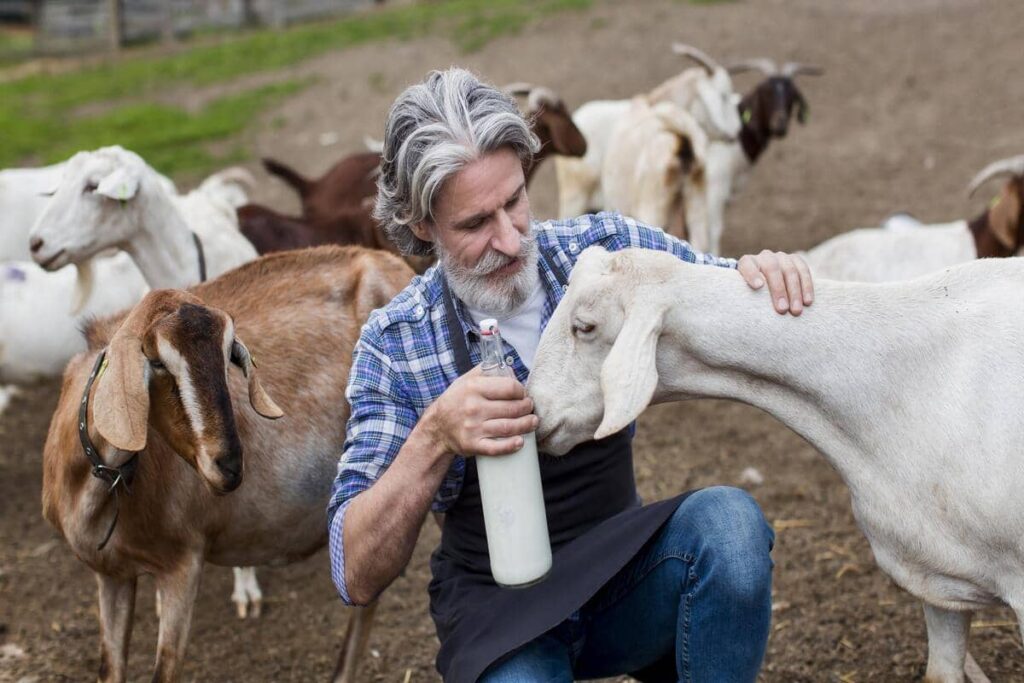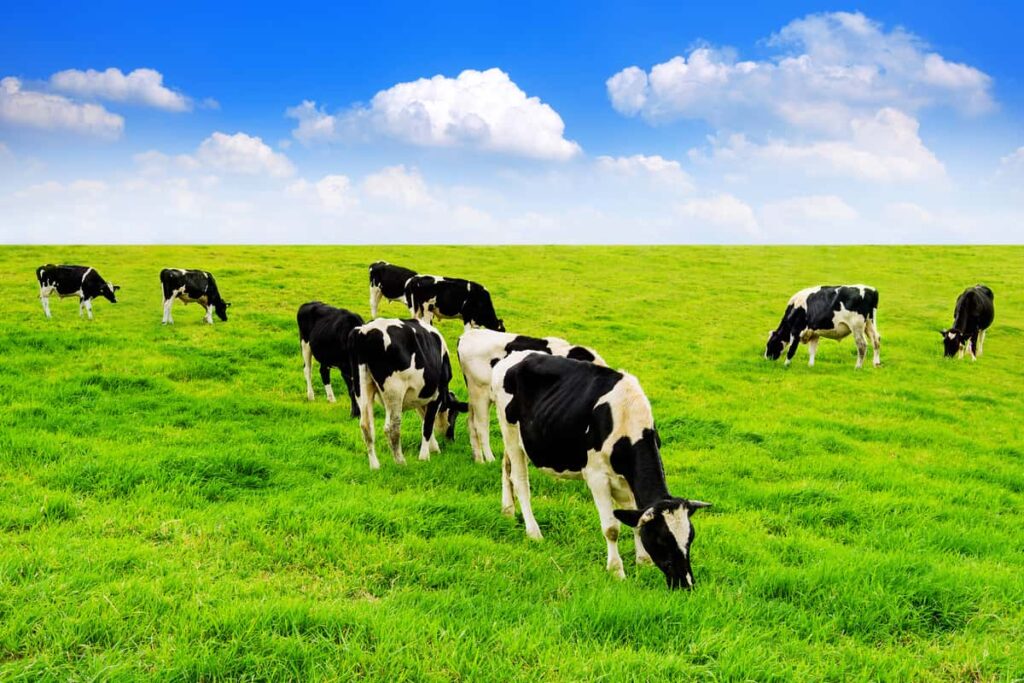If you’re wondering “what does goat milk taste like?” you want the real deal. You’re probably curious but maybe a little skeptical, especially if you’ve heard whispers about a “goaty” taste. Let’s cut through the noise and get down to the flavorful.

The Core Flavor Profile: Creamy, Tangy & Clean
At its best, fresh, high quality goat milk tastes:
Distinctly Creamy: Think whole cow’s milk level of richness but often with a lighter, almost silky mouthfeel. It coats your tongue pleasantly.
Noticeably Tangy/Sweet: This is the signature note! Imagine a very mild, natural sweetness (like lactose) instantly balanced by a bright, clean tanginess. It’s not sour like lemon but more like a hint of plain yogurt or a whisper of cultured butter. This tang is natural and desirable.
Clean & Fresh: When handled well, the dominant impression is clean and refreshing. It lacks the sometimes heavy, flat aftertaste some associate with certain cow’s milks.
Subtly Savory (Sometimes): Some palates detect a faint savory or “minerally” undertone, especially compared to ultra-homogenized cow’s milk. Think more like fresh spring water complexity than anything strong.
Why People Perceive Goat Milk Differently: The “Goaty” Myth Debunked
Ah, the elephant in the room. Yes, some goat milk can have a stronger, sometimes described as “barnyard,” “animalic,” or simply “goaty” flavor. But here’s the crucial fact: This is NOT inherent to all goat milk. It’s often a sign of handling or diet.
The Science Bit (Case Study Time!): Research, like studies from Cornell University’s Department of Food Science, points directly to compounds called free fatty acids (FFAs), specifically capric, caprylic and caproid acids. These are naturally present in goat milk fat.
The Catch: When milk isn’t chilled rapidly after milking or if it’s exposed to oxygen or certain bacteria, an enzyme called lipase breaks down the milk fat triglycerides, releasing more of these FFAs. This is what creates the stronger, sometimes off putting flavor.
The Solution is Chilling: Modern goat dairies know this cold (pun intended!). They chill milk immediately – often within minutes – to near freezing temperatures. This halts the lipase activity, locking in that clean, sweet tangy flavor profile. A 2019 review in the Journal of Dairy Science emphasized that proper on farm handling is the single biggest factor in preventing undesirable flavors. The difference between milk chilled immediately vs. with even a short delay is stark.
What Does Goat Milk Taste Like Compared to Cow Milk?
This is where it gets real:
Tang Factor: Goat milk’s tanginess is its most distinct difference. Cow milk is generally milder and sweeter upfront.
Richness vs. Liteness: While creamy, goat milk often feels lighter and less “coating” than full fat cow milk. It digests easier for many precisely because the fat globules are smaller and naturally homogenized.
Aftertaste: High quality goat milk typically has a cleaner, quicker finish. Cow milk can sometimes leave a heavier residue.
Sweetness: Both contain lactose but the tang in goat milk can make its inherent sweetness seem less pronounced initially, though it’s definitely there.
Putting “What Does Goat Milk Taste Like” to the Test: Real-World Uses
The flavor profile makes goat milk incredibly versatile:
In Your Coffee: That tang cuts through coffee’s bitterness beautifully, adding a unique creaminess without overwhelming. Try it!
Sipped Cold: Fresh, chilled goat milk is a refreshing, satisfying drink – expect creamy, tangy, clean.
Cereal & Smoothies: Adds a delicious complexity. It pairs exceptionally well with berries and granola.
The Cheese & Yogurt Game Changer: This is where goat milk SHINES. That natural tang is exactly why goat cheeses (chèvre) have their iconic flavor – bright, earthy, delicious. Goat yogurt is famously tart, thick and less cloying than some cow milk yogurts. It’s not an accident; it’s the milk’s inherent character elevated.
Finding the Good Stuff: Your Taste Test Guide
Ready to experience goat milk for yourself? Follow these tips:
Source Matters: Look for local dairies with a reputation for quality or reputable national brands known for goat dairy (Meyenberg is a widely available example). Check labels for “Grade A.”
Freshness is Key: Buy the freshest carton available. Check the “sell-by” or “best by” date.
Chill First: Always taste it well chilled. Temperature affects flavor perception.
Start Neutral: Taste it plain first, in a clean glass. Sip, let it coat your tongue. Note the creaminess, the initial sweetness, the developing tang, the finish. Is it clean? Is there any unpleasant sharpness or barnyard note?
Try it in Applications: Then try it in coffee on cereal or blended in a simple smoothie. just milk and banana are a great test.

The Verdict on What Does Goat Milk Tastes Like
So, what does goat milk taste like? At its best: a uniquely refreshing blend of creamy texture, natural sweetness and a bright, clean tanginess. It’s distinct from cow milk – lighter, tangier and often with a cleaner finish. Forget the outdated “goaty” stereotype; modern, well handled goat milk is a delicious, versatile dairy choice.
Its inherent flavor profile makes it a superstar for cheeses and yogurts. Approach it with an open mind, seek out quality sources that prioritize rapid chilling and discover its clean, tangy charm for yourself. You might just find your new favorite milk!

Beyond the Hype: How Does Goat Milk Taste Compared to Cow Milk
Forget everything you’ve heard about that “barnyard” flavor. The real story of how goat milk tastes compared to cow milk is far more surprising and delicious than the myths suggest. Let’s cut through the noise with hard data and real-world experiences.
The Core Flavor Profile:
- Sweetness vs. Neutrality:
Fresh, properly handled goat milk often carries a noticeably sweeter profile than cow milk. This isn’t guesswork: Nigerian Dwarf goat milk, for example, contains 6-10% butterfat double the fat content of standard whole cow milk (3.25%) imparting a natural, caramel-like sweetness 710. Cow milk, in contrast, leans neutral or “plain,” letting cereal or coffee flavors dominate 26.
- Texture: Creamy vs. Watery?
Thanks to naturally smaller fat globules, goat milk feels creamier in your mouth despite similar fat percentages. These tiny globules (20% smaller than cow milk’s) create a smooth, uniform texture without separation—no homogenization needed. Cow milk’s larger globules rise as cream, leaving a thinner base liquid 610.
- The Aftertaste Test:
Here’s where opinions split. Goat milk leaves a clean, quick finish for most, while cow milk lingers with a buttery or “animal” note (often called “cowy”). A blind taste test by a dairy farm found participants mistook high-quality goat milk for cow milk due to its mildness overturning expectations of a “goatee” punch 27.
What Shapes Goat Milk’s Flavor? It’s Not Random
Diet Dictates Taste:
Pasture-grazed goats eating wild herbs yield milk with grassy, floral hints.
Grain-fed goats (soy/corn diets) produce stronger, less pleasant flavors, as noted by a farmer who overhauled a goat’s diet from soy to organic oats/barley, transforming its milk from “unimpressive” to “clean and sweet” 2.
Breed Matters More Than You Think:
Nubian goats: Highest butterfat (4.8–5.6%) = caramel sweetness, ideal for cheese.
Saanen goats: Lower fat (2.5–3%) = neutral taste, closest to cow milk.
Nigerian Dwarfs: Ultra-high fat (6–10%) = dessert-level richness 710.
Handling Is Everything:
Milk left warm for >20 minutes develops off-flavors. Rapid cooling to <38°F (3°C) preserves sweetness. One study confirmed pasteurization intensifies “goaty” notes which is why raw goat milk fans swear by its cleaner taste 2712.

How Does Goat Milk Taste Compared to Cow Milk Nutritionally?
Beyond flavor, your body reacts differently:
Lactose: Goat milk has ~1g less per cup (10.9g vs. cow milk’s 11.9g) a small but meaningful difference for sensitive digestions 68.
Proteins: Goat milk’s A2 beta-casein (like human breast milk) forms softer, faster-digesting curds. Cow milk’s A1 protein can trigger inflammation in some guts 811.
Nutrient boosts: Goat milk delivers 13% more calcium, 25% more vitamin B6 and 47% more vitamin A per cup vs. cow milk 610.
Case Study: The Farm That Changed Minds
A family dairy switched a goat from soy feed to organic oats/peas/sunflower seeds. Result? Milk went from “reject-worthy” to “better than cow milk.” They also implemented rapid freezing: chilling milk in salted ice baths within 30 minutes. Tasters described it as “sweet, mild and creamy” debunking the “goaty” stereotype 2.
Busting the “Goaty” Myth Once and For All
That “funny” taste? Usually a red flag for poor handling, not the milk itself. When:
Udder hygiene is lax (manure contact, unsanitized equipment)
Cooling is slow (allowing bacterial growth)
Breeds like Alpine or Saanen aren’t prioritized for mildness
the milk develops volatile fatty acids that scream “barnyard.” Solution? Source from farms listing breed types and cooling methods 2712.
The Verdict: Give Goat Milk a Fair Shot
Stop imagining pungent cheese. Today’s well produced goat milk is a creamy, subtly sweet alternative that outshines cow milk in digestibility and nutrient density. As one dairy puts it: “New customers taste it and say: ‘Wow! This tastes almost like cow’s milk but better!’” 7.
Your Action Plan:
Try raw or low temp pasteurized goat milk (avoid ultra pasteurized).
Start with Saanen or Alpine breeds for a “gateway” flavor.
Use it in overnight oats, lattes or chowders. its richness elevates recipes without overpowering 712.

FAQ: What Does Goat Milk Taste Like?
Q1: Seriously, what does goat milk ACTUALLY taste like? Give it to me straight.
A: Fresh, high-quality goat milk tastes clean and mildly sweet with a subtle tang. Think “cow’s milk but with a twist.” You might notice:
A creamy, rich mouthfeel (thanks to smaller fat globules and higher butterfat in some breeds—Nigerian Dwarf goats hit 6-10% butterfat! 27)
Grassy or earthy notes (if goats graze on herbs or pasture) 26
Zero “barnyard” aftertaste when handled right 23
Real talk: In blind taste tests, people often mistake it for cow’s milk. One farm even reported a tester guessing goat milk was cow’s milk 7.
Q2: Does it taste like a goat? I’m scared of that “goaty” flavor.
A: That “goaty” taste is a myth for well-handled milk. It’s usually caused by:
Slow cooling (milk not chilled within 15-20 minutes of milking) 23
Poor sanitation (dirty equipment or udders) 47
Bucks nearby (males’ musky scent can transfer to milk) 34
Fact check: Summerhill Dairy (California) cools milk within seconds of milking. Result? Customers say: “Wow! This tastes almost like cow’s milk but better!” 2
Q3: How does it compare to cow’s milk?
A: Side by side:
Creamier texture despite similar fat content (smaller fat globules create a smoother feel) 210
Tangier, less bland than cow’s milk 14
No lingering aftertaste (cow’s milk can have one) 2
Naturally homogenized (no cream separation like in cow’s milk) 7
Pro tip: If you drink 2% cow’s milk, try Saanen goat milk (3% butterfat). Texture twins! 10
Q4: What affects the flavor? Can farmers control it?
A: Absolutely. Key factors:
Diet: Goats eating alfalfa hay = sweeter milk. Wild onions/garlic? Funky flavors 37.
Breed: Nigerian Dwarf = dessert-level sweet. Saanen = mild and neutral 27.
Processing: Quick chilling = sweet milk. Ultra-pasteurization = “cooked” flavor 210.
Health: Mastitis (udder infection) = bitter milk. Healthy goats = clean taste 46.
Case study: A homesteader switched goats from soy/corn feed to organic oats/barley. Result? Milk went from “meh” to “SO clean” 7.
Q5: Is goat milk thicker or thinner than cow’s milk?
A: Depends on the breed! Butterfat content ranges wildly:
Nigerian Dwarf: 6-10% (like half-and-half) 7
Nubian: 4.8-5.6% (rich, caramel notes) 2
Saanen: 2.5-3% (close to 2% cow’s milk) 210
Fun fact: Mini Nubians (Nubian + Nigerian Dwarf cross) split the difference—creamy but not overkill 7.
Q6: Can I cook with it? Will my pancakes taste like a farm?
A: Yes, and no farm vibes. It’s a stealth swap:
Baking: Adds moisture + subtle nuttiness (no flavor takeover) 210
Smoothies/Coffee: Creaminess without overpowering 2
Mac and Cheese: One writer fooled family using goat milk—zero suspicion 14
Pro move: Use it in any recipe calling for cow’s milk. Start with a high-quality brand like Summerhill or Good Goat Milk Company 210.
Q7: Why does store-bought goat milk taste stronger than farm fresh?
A: Blame processing:
Pasteurization: High-heat methods kill bacteria but amplify “goaty” notes 7
Transport/Storage: Milk sits longer, degrading flavor 4
Raw vs. Pasteurized: Raw goat milk (where legal) tastes “fresh and sweet”—store-bought can taste “gamey” 7
Solution: Seek local farms that rapid-chill milk. Or try freeze-dried powders (like Good Goat Milk Co.) flavor stays mild 10.
The Takeaway?
Goat milk’s flavor is mild, creamy and adaptable not a barnyard punch. Handling is everything: quick chilling, clean goats, and smart feeding = milk that wins over cow’s milk loyalists. Your move? Grab a glass from a trusted farm and taste the difference 237.
